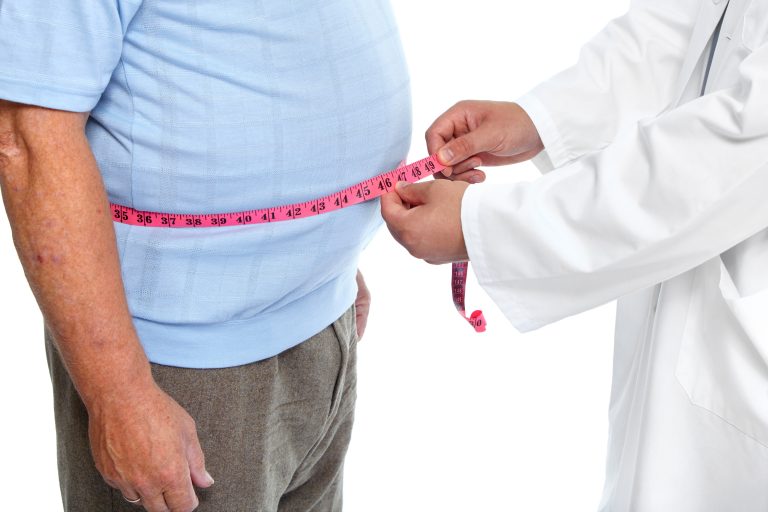Obesity is defined as “excessive or abnormal fat accumulation that may impair health and presents a risk to health” by the World Health Organization. Normally, 15-20% of the body weight is fat tissue in men and 25-30% in women. When this ratio is above 25% in men and 30% in women, the condition is called obesity. Specialists from General Surgery Department of Hisar Intercontinental Hospital informs about obesity surgeries which are performed for body weight problems and also for serious risks caused by various diseases of the body.
Obesity causes diseases that can pose a life-threatening risk in addition to excessive weight
Obesity is not caused by eating too much; also, it should not be considered as a simple overweight and a cosmetic problem. It can trigger many life-threatening diseases -primarily diabetes- such as cardiovascular diseases, atherosclerosis, gallbladder diseases and joint diseases. Most importantly, obesity is directly related to cancer. Eating habits that cause obesity are also associated with unhealthy habits that lead to cancer. Breast cancer, colon cancer and stomach cancer are more prevalent in obese individuals.
Type of obesity is determined by measuring body mass index
The pattern of fat distribution, rather than the amount of fat in body, is important. In ‘apple-shaped obesity’ which is more common in men, the fat accumulates in upper part of the body, namely the waist, upper abdomen and chest, while the fat accumulates in lower part of the body, or in other words, in hips, thigh and legs in ‘pear-shaped obesity’ which is more prevalent in women. In addition to the body mass index (BMI), type of obesity is also verified through some measurements such as the waist circumference and the waist/hip ratio. Waist/hip circumference should be less than 0.9 in men and 0.8 in women. Waist circumference above 94 cm in men and 80 cm in women increases the risk of cardiovascular diseases.
Surgical procedure is considered for patients with serious obesity
The condition is defined and classified according to the body mass index (BMI). BMI is calculated by dividing your body weight (in kilograms) by your height (in meters) squared.
- BMI 25-30: Overweight
- BMI 30-35: Class 1 Obese
- BMI 35-40: Class 2 Obese
- BMI>40: Class 3 Obese; Morbid Obese
- BMI>50: Super Obese
- BMI >60: Super Super OBESE
As Class 3 and higher classes are characterized by the severest obesity related complications, they are called morbid obesity. It is very hard for these patients to lose a significant amount of weight with medications and diet; it may be necessary to discuss the surgical treatment.
Sometimes, obesity surgeries can be recommended for patients with BMI between 35 and 40 if they have any serious and uncontrollable disorder associating with the obesity such as diabetes, hypertension or heart disease.
Patients recover more quickly with laparoscopic surgery
In terms of obesity surgeries which are performed principally to reduce the volume of stomach, patients are provided with a more comfortable recovery period with laparoscopic surgery performed only with a small incision comparing to open surgery.
Methods used in obesity surgeries:
- Intragastric balloon: This method is performed with endoscopic technique and does not require hospitalization and general anesthesia. Volume of the stomach is reduced with an adjustable balloon placed inside the stomach and a feeling of fullness is induced.
- Gastric Band: A silicone band is placed in the junction of esophagus and stomach with adjustable silicone gastric band method and the food intake is reduced with the help of this band. Gastric band is placed with laparoscopic method and since it is performed with small incisions, the patients can return to their daily life in much shorter time and can lose more than 60-80 percent of excessive weight within 18-24 months. This method requires postoperative cooperation between the patient and physician and dietician.
- Gastric Sleeve: (Sleeve Gastrectomy) This method aims to reduce the volume of stomach and achieve fullness with less food intake. For this purpose, a certain part of the stomach is removed with surgical approach and a tube-like stomach is left. Moreover, feeling of hunger is also eliminated as the part of stomach producing the hunger hormone is also excised. The patients can return to their daily lives within a very short time. The patients can easily feel full by eating small amounts of foods after the surgery and this turns into loss of appetite after a while. 80-90% of excessive weight can be lost within a few years after the surgery.
- Gastric By-pass: A large part of the stomach is by-passed and a stomach with small volume is created and stitched to small intestines. Thus, the food cannot follow the normal route; an absorption disorder is deliberately created. The patient is provided with necessary vitamin and mineral supplements after this type of surgeries and it is ensured that they can be discharged to home within a week.

